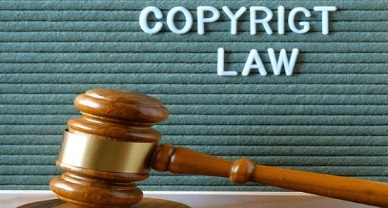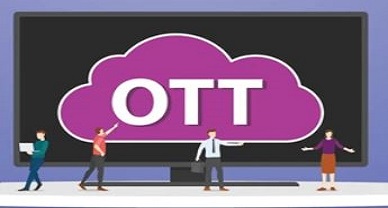Copyright Disputes In Digital Age
INTRODUCTION
The digital revolution has brought a great change in the media and entertainment sector, offering new distribution channels, creativity, and worldwide reach. However, it has also posed severe legal problems, particularly in copyright issues. As the content becomes more accessible and shareable through digital platforms, there is an increased possibility of unlawful use, infringement, and piracy, and this has resulted in a complicated web of copyright conflicts.
Media and entertainment law, which is a part of intellectual property law, plays a vital role in dealing with these issues by defending the rights of artists, producers, and distributors. Copyright laws protect original works such as books, music, movies, television series, and digital media by giving authors the sole right to reproduce, distribute, and exhibit their creations.
COPYRIGHT DISPUTES IN DIGITAL AGE
Thanks to the developments in technology from time to time, such as the printing press, photocopiers, scanners, cameras, the internet, and mobile phone applications among many others, it is today very easy, convenient, and inexpensive to infringe on copyrights of owners of software, codes, programs, digital media, and applications, and in order to refrain from such, conventions and treaties had to be brought together worldwide to regulate and get the rights of the parties in place.
WIPO (World Intellectual Property Organisation)
WIPO is continuously working on the laborious task of maintaining current standards and introducing new laws for copyright protection into the rapidly expanding online. These two new treaties, the WIPO Phonogram and Performance Treaty (WPPT) and the WIPO Copyright Treaty (WCT), were brought to the globe as important safety measures. Because they both work together in protecting the rights of owners in the digital sphere as well as preventing piracy and duplication, these agreements are well-known as “Internet” treaties.
WCT and WPPT
WCT concentrates on the composition of computer programs and databases and expands upon the preservation of original works of literature, art, music, fine art, and photography. In this regard, as far as copyrights in the dynamic and constantly changing arena of information technology is concerned, it provides various novel protections which no other treaty currently in force offers, such as protecting programmers.
The problems that musicians, singers, actors, and others encounter when performing live or virtually are explained by WPPT. Phonogram makers also have to deal with the problem of others copying their musical note and vocal sound signs and symbols. Even though WPPT is intended for a particular demographic, performers’ work, is still increasingly vulnerable to unauthorised reproduction because of ongoing technological advancements.
THE INFORMATION TECHNOLOGY ACT, 2000 AND AMENDMENT
The Information Technology Act of 2000 in India regulates laws pertaining to cybercrimes, data manipulation, and a wide range of information technology, including digital lockers and digital signatures. The Act’s Section 2(0) defines the term “data.” Any information, fact, procedure, knowledge, or command that is given into a computer system to enable optimal use by the person organising it is referred to as data.
The Ministry of Electronics and Information Technology (MeitY) notified the Information Technology (Intermediary Guidelines and Digital Media Ethics Code) Rules, 2021, that replaced the 2011 rules. It is because the illegitimate usage of social media networks caused the rise in incidents involving violence, and this year’s rules were devised to overcome these problems to never let them happen again in future.

As one can see, the ambit of the IT Act 2000 has been expanded under the 2021 Rules that enforce new criteria. Take for instance Section 79(2) read with Section 89(2)(zg) of the IT Act, 2000, which mentions how Central Government’s authority is curbed only to establish the rule pertaining to the due diligence the intermediaries need to observe under the IT Act. However, the 2021 Rules have also created a different set of rules for digital media in the form of a “code ode ethics” that is not covered by the parent Act. Secondly, though the Act does not specify how intermediaries are to be classified, the 2021 Rules have created new categories. Lastly, “digital media,” meaning digital content that is transferred, processed, altered, etc. by middlemen and “publishers,” falls under Part III of the 2021 Rules.
JUDICIAL RECOGNITION
Fairmount Hotels Pvt. Ltd. v. Bhupender Singh, This case involves a copyright infringement complaint filed by the plaintiff against the defendant wherein the plaintiff alleged the defendant was their former employee who, after leaving the job, started using and posting the photographs of the plaintiff on Facebook in order to promote his new hotel. The Delhi High Court awarded the case in favour of the plaintiff while holding the defendant liable for violating the plaintiff’s rights.
Zee Telefilms Ltd. v. Sundial Communications Pvt. Ltd. (2005), defined what “reproduction” is according to the definition of the Copyright Act. Here, the court determined it is illegal to make reproduction of a work when doing so is not with the approval of the owner, such as in cable television programs. Since audiovisual works disseminate their copies over such new mediums as cable and satellite television, this case unveiled the growing need to safeguard the same.
CONCLUSION
Social media platforms have made it possible for people from all over the world to interact with one another. This connection extends beyond private conversations and involves sharing and uploading images, videos, current locations, among other things. Nevertheless, there are certain copyright concerns with the material on these networks. The Copyright Act, 1957 (as amended up to 2012) is the law governing these matters in India, and the Information Technology Act, 2000 and the IT Rules, 2021 deal with intermediary liability. Though commendable that the Indian government has been trying to keep the copyright laws updated with new technologies, conventions, and international laws, there are a few errors that need correction.
Author: Aadhya Agrawal, in case of any queries please contact/write back to us at support@ipandlegalfilings.com or IP & Legal Filing
REFERENCES
- Copyright Law in the Digital World: Challenges and Opportunities by Manoj Kumar Sinha and Vikrant Narayan Vasudeva.
- Intellectual Property and Media Law: The Law of Copyright by Gillian Davies.
- https://or.niscpr.res.in/index.php/JIPR/article/download/5619/1923/18144
- Entertainment Law: Cases and Materials on Established and Emerging Media by Sherri Burr.
- https://www.etblaw.com/digital-copyright-infringement-challenges-and-solutions/
- World Intellectual Property Organization (WIPO) website:


